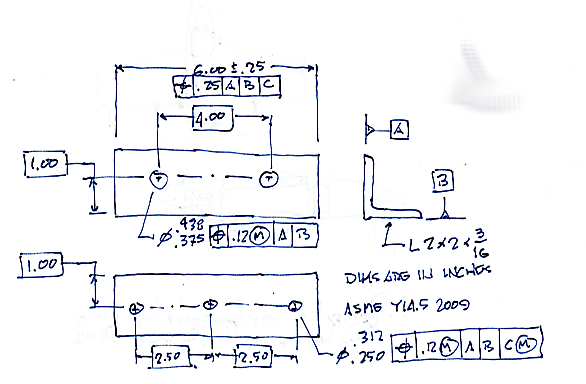I would very much be interested to know if anyone can produce any tangible data, to suggest a correlation between GD&T on a drawing, and an increase in vendor procured parts?
I'm not trying to lead a revolt. Clearly, GD&T is the way to go for a great many parts. But for low cost drivers, I believe that many vendors will arbitrarily increase the quoted price, even at the mere mention of the most primitive tolerancing. (or even datums) I cannot prove this, and I can't get anyone to commission a study of the matter. But as a 24+ year engineer, and former business owner, I have firsthand knowledge of this issue. Which does no good, when I can't reliably communicate it to others.
The company that I work for, is currently trying to implement some tolerancing rules, that are broken down by product level. Main product, tooling, electrical, GSE, etc. I believe that we need a very clear delineation in these product lines, as none of them demand the exact level of rigor as any of the other.
I'm not trying to lead a revolt. Clearly, GD&T is the way to go for a great many parts. But for low cost drivers, I believe that many vendors will arbitrarily increase the quoted price, even at the mere mention of the most primitive tolerancing. (or even datums) I cannot prove this, and I can't get anyone to commission a study of the matter. But as a 24+ year engineer, and former business owner, I have firsthand knowledge of this issue. Which does no good, when I can't reliably communicate it to others.
The company that I work for, is currently trying to implement some tolerancing rules, that are broken down by product level. Main product, tooling, electrical, GSE, etc. I believe that we need a very clear delineation in these product lines, as none of them demand the exact level of rigor as any of the other.



![[smile] [smile] [smile]](/data/assets/smilies/smile.gif)